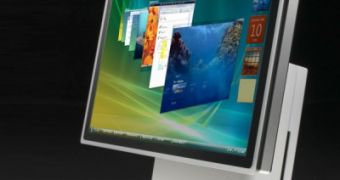Libraries are a Windows 7 specific feature, designed to enable end users to easily centralize their content, and streamline access, independent of where the actual files and folders are located. And fact is that Libraries in Windows 7 stretch well beyond the local machine, also including content in remote storage. The Libraries are customizable in this sense, with end users being able to point the feature to a specific destination, in order to add files or folder to a specific Library. This is why the software giant refers to Libraries as collections of user-defined content.
“By including folders in Libraries, the user is telling Windows where his important data is located. The system will index folders, to enable fast searching and stacking based on file properties,” explained Yochay Kiriaty, Windows 7 technical evangelist on the Client Platform Evangelist Group. [But] “libraries don't actually store items. They monitor folders that contain a user’s items, and provide a single access point and rich view pivots (by file Type, date or author) of this aggregated content. Libraries promote a user’s data and let the file system fade into the background.”
Testers that have already been running Windows 7 Beta and pre-Release Candidate builds of the operating system, have had the chance to use Libraries as an integral part of the Windows Shell. Accessible via Windows Explorer, Libraries do much more than just aggregate content. In this regard, because of the close integration with the Windows Shell, users will be able to take advantage of all the options available in Windows Explorer to filter the content in Libraries.
“This integration is very important because it enables users to browse their files the same way they would in a folder, which means there is no new behavior to learn. Clicking on the Documents Library shows you your documents. Moreover, due to the fact that libraries are integrated into the Windows Shell, users can perform searches and filter results by properties like date, type, and author in both Windows Explorer and the Common File Dialog. In other words, by using libraries, users get to enjoy storage that is both flexible and indexed,” Kiriaty added.

 14 DAY TRIAL //
14 DAY TRIAL //